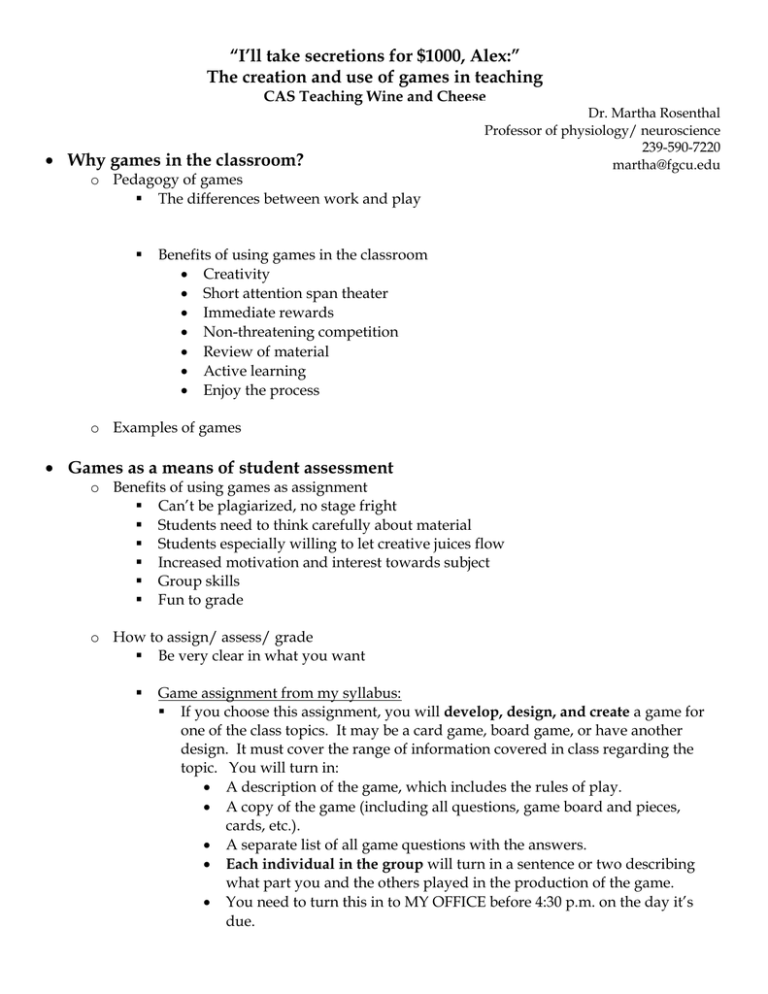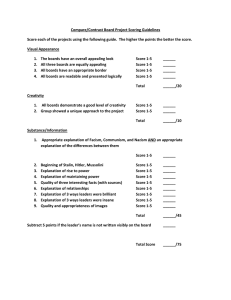Click here for handout
advertisement

“I’ll take secretions for $1000, Alex:” The creation and use of games in teaching CAS Teaching Wine and Cheese Why games in the classroom? o Pedagogy of games The differences between work and play Dr. Martha Rosenthal Professor of physiology/ neuroscience 239-590-7220 martha@fgcu.edu Benefits of using games in the classroom Creativity Short attention span theater Immediate rewards Non-threatening competition Review of material Active learning Enjoy the process o Examples of games Games as a means of student assessment o Benefits of using games as assignment Can’t be plagiarized, no stage fright Students need to think carefully about material Students especially willing to let creative juices flow Increased motivation and interest towards subject Group skills Fun to grade o How to assign/ assess/ grade Be very clear in what you want Game assignment from my syllabus: If you choose this assignment, you will develop, design, and create a game for one of the class topics. It may be a card game, board game, or have another design. It must cover the range of information covered in class regarding the topic. You will turn in: A description of the game, which includes the rules of play. A copy of the game (including all questions, game board and pieces, cards, etc.). A separate list of all game questions with the answers. Each individual in the group will turn in a sentence or two describing what part you and the others played in the production of the game. You need to turn this in to MY OFFICE before 4:30 p.m. on the day it’s due. This is worth a total of 50 points. Your grade will be based on: The accuracy of your questions. (20/50 pts) The scope of your questions—including the number of questions asked, the breadth of the material covered, and consideration of the difficulty of the questions. (10/50) Organization, presentation, and clarity of directions. (10/50) Originality, creativity, neatness of game materials. (8/10) Individual evaluation sheet (evaluates group members). (2/10) o Examples of student games Game creation o How to design games of your own Choose the material you want to cover Consider the scope of the material to cover Consider the difficulty with which you want to present it Think of learning outcomes – consider the type of learning you are trying to facilitate. Are you trying to have people understand theories and concepts? Facts? Both? How would you make up a game that only tests facts? How is that different from a game which tests theories? How can you incorporate both into one game? Choose the game format Think of games you’ve played and model it after that. Add your own changes and revisions. Consider the size of your class and the materials you will need to make Where to get materials Game boards o Boards from Goodwill/ garage sales o Poster presentations o Posterboard o Laminate Cards o Print out and cut on cardstock o Print out stickers and stick to ½ size index cards Make-a-game kits On site grants for course material


